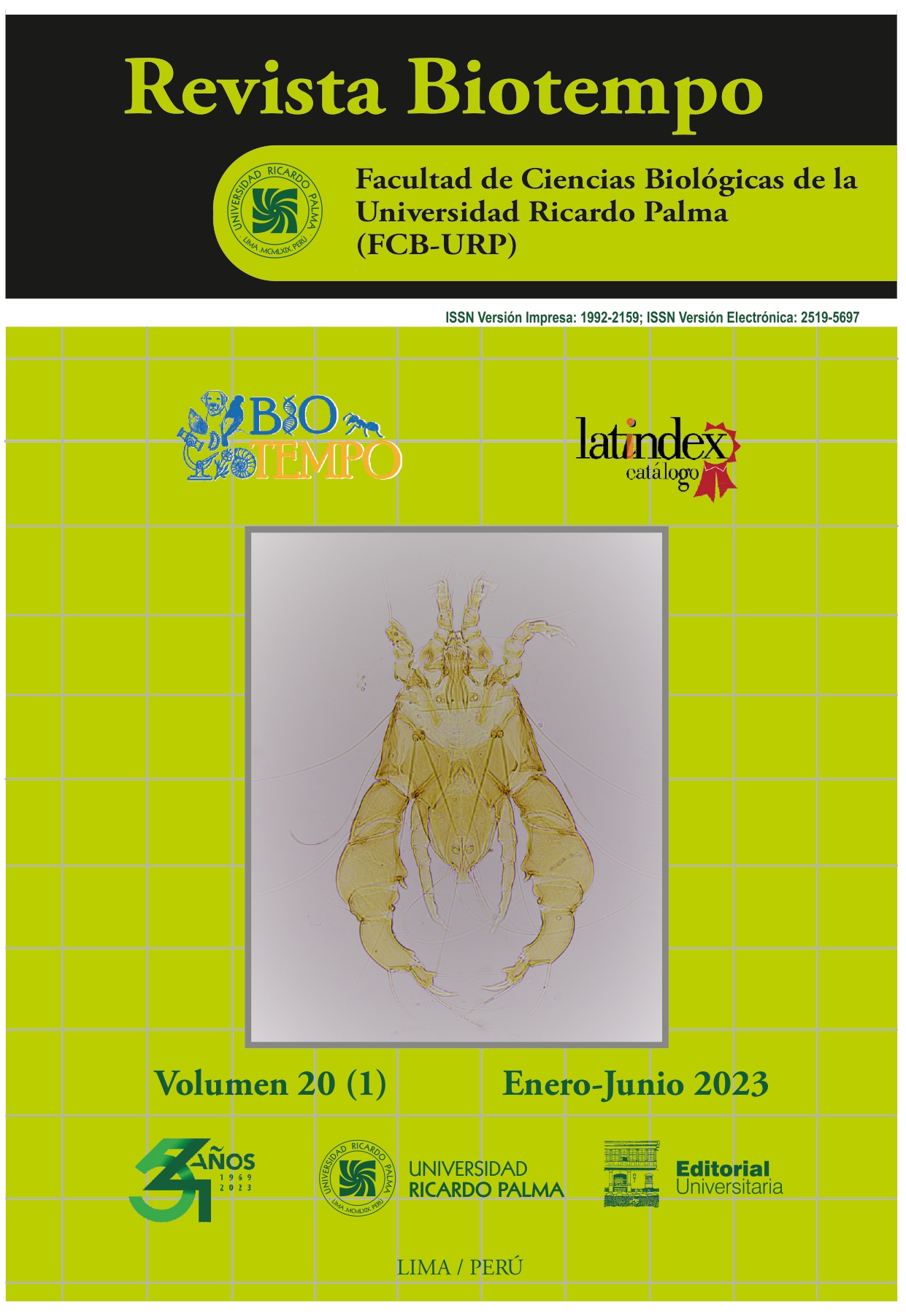Insectos asociados a trampas cromáticas en seis cultivares de lechuga (Lactuca sativa) con manejo orgánico en un huerto agrícola de la costa peruana
DOI:
https://doi.org/10.31381/biotempo.v20i1.5605Palabras clave:
control orgánico de plagas, cultivares de lechuga, Razecol, trampas azules y amarillasResumen
Lettuce (Lactuca sativa L.) is a vegetable that presents versatility in cultivation techniques. Currently, research related to the productive behavior of cultivars and the evaluation of pests and diseases is being conducted. To minimize the damage of phytophagous insects in the production of leafy vegetables, the use of sticky traps of different colors has been recommended. Therefore, the purpose of this work was to identify the insects associated with the lettuce (L. sativa) crop trapped based on the chromatic trap (yellow and blue), using Razecol 100® (agricultural adherent), during the period from September to October 2022, under the Vegetable Research and Social Projection Program of the Universidad Nacional Agraria La Molina, Lima, Peru. 866 individuals were distributed in six orders (Diptera, Hemiptera, Lepidoptera, Coleoptera, Neuroptera, and Hymenoptera), and nine families were collected. The beneficial predatory fly of the genus Condylostylus (Diptera: Dolichopodidae), was dominant, with 314 specimens, and was also the most abundant in the vegetable production ecosystem. In four of the five temporary sampling units, specimens of the genus Agapostemon
(Hymenoptera: Halictidae) and the blue color were preferred by this genus. The efficiency of yellow and blue traps in the control of pests associated with lettuce was demonstrated.









